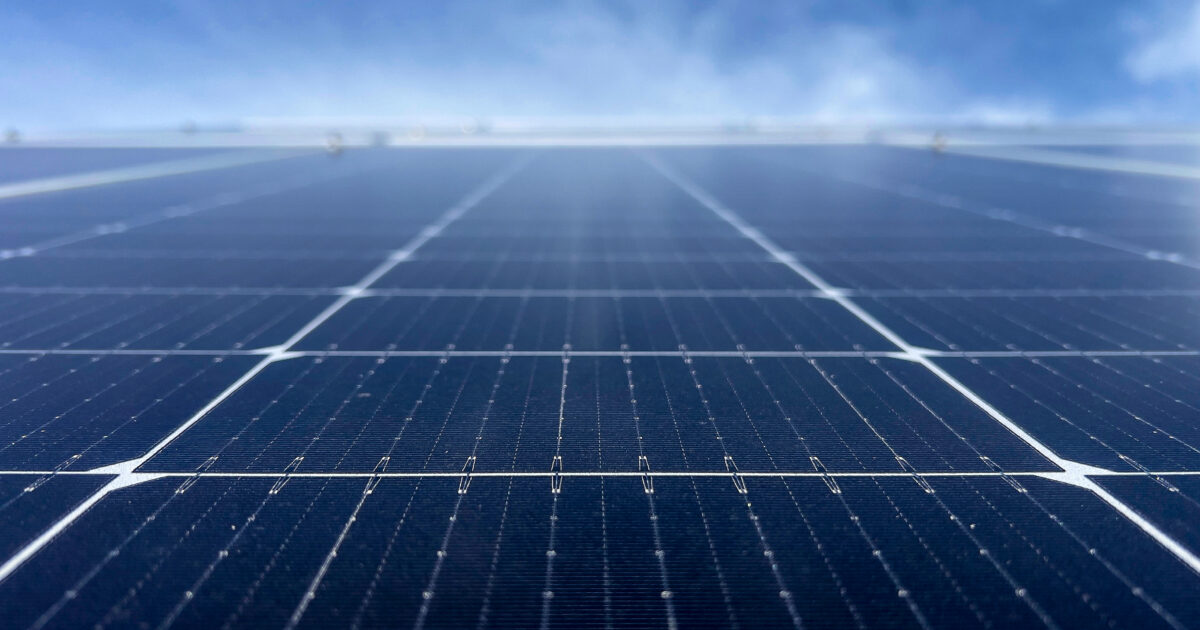Solar Energy Expansion in Rural Communities


Alternative Energy Sources and the Impact on Rural Communities

Solar’s Growth
Alternative energy sources such as wind, geothermal, hydro, and solar have gained popularity in reducing greenhouse gas emissions and decentralizing power production. Solar energy, which converts energy from the sun into thermal or electrical power, is rapidly expanding worldwide. However, it is important to consider both the benefits and drawbacks of solar energy.
According to the Solar Energy Industries Association, solar energy production has grown by an average of 25% per year over the last decade. Additionally, installation costs have dropped by more than 40%. The Department of Energy predicts that solar energy will account for 45% of the nation’s total energy production by 2050, requiring approximately 10.4 million acres of land for solar production. It is expected that 90% of this solar development will come from utility-scale projects in rural communities.
Solar on Farmland
While solar development will be distributed nationwide, large utility-scale projects will be concentrated in areas with favorable siting and interconnection opportunities. Farmland, which often meets the necessary criteria for solar power facilities, is an ideal location due to its clear, dry, and relatively flat characteristics. Moreover, farmland has lower construction costs compared to other types of land.
Solar energy leasing provides an opportunity for farmers to diversify their income. However, this can also lead to increased land competition and higher rental prices, which can be a burden for farm operators, especially considering that more than half of cropland is rented. Concerns have also been raised regarding the “nonmonetary impacts” of solar energy leases, such as changes in land use from agricultural to industrial purposes.
Advancing Agriculture-Friendly Solar
Despite the challenges, there are encouraging developments that promote sustainability for both the agriculture and solar energy industries. Agrivoltaics, the co-location of agricultural production and solar energy generation on the same land, is gaining traction. Currently, these projects often involve sheep grazing, but research is being conducted to incorporate cattle grazing and crop production.
According to the National Renewable Energy Laboratory’s agrivoltaics map, a significant number of projects do not list agricultural output as an outcome. Instead, they focus on incorporating pollinator or native grass habitats. A new term, ecovoltaics, better describes solar projects that integrate pollinator habitats and define a combined system of energy production and ecosystem services.
Takeaways
The United States is experiencing rapid development in its energy system, with a shift towards low-carbon, renewable sources to meet increasing electricity demand. Solar energy is at the forefront of this transition, with significant development occurring on farmland and in rural communities. While solar energy presents financial opportunities for landowners, it also poses challenges for farmer renters and the next generation.
It is crucial to prioritize the preservation of agricultural land as we pursue clean energy solutions. The expansion of solar energy should be carefully planned to avoid decommissioning productive agricultural lands. The goal is not whether we have solar energy production, but rather where and how we implement it.
Betty Resnick is an economist and Arica Hamilton is a public policy analyst at the American Farm Bureau Federation. This column was adapted from a Market Intel published by AFBF.
SDGs, Targets, and Indicators
| SDGs | Targets | Indicators |
|---|---|---|
| SDG 7: Affordable and Clean Energy | 7.2: Increase substantially the share of renewable energy in the global energy mix | Percentage increase in solar energy production |
| SDG 11: Sustainable Cities and Communities | 11.3: Enhance inclusive and sustainable urbanization and capacity for participatory, integrated and sustainable human settlement planning and management in all countries | Number of utility-scale solar projects in rural communities |
| SDG 13: Climate Action | 13.2: Integrate climate change measures into national policies, strategies and planning | Reduction in greenhouse gas emissions through solar energy production |
| SDG 15: Life on Land | 15.3: Combat desertification, restore degraded land and soil, including land affected by desertification, drought and floods, and strive to achieve a land degradation-neutral world | Percentage of solar energy projects located on farmland |
1. Which SDGs are addressed or connected to the issues highlighted in the article?
SDG 7: Affordable and Clean Energy
The article discusses the growth of solar energy as an alternative energy source to reduce greenhouse gas emissions and strengthen the grid. This aligns with SDG 7, which aims to ensure access to affordable, reliable, sustainable, and modern energy for all.
SDG 11: Sustainable Cities and Communities
The article mentions that utility-scale solar projects are concentrated in rural communities. SDG 11 focuses on making cities and human settlements inclusive, safe, resilient, and sustainable.
SDG 13: Climate Action
The article highlights solar energy as a way to reduce greenhouse gas emissions. SDG 13 aims to take urgent action to combat climate change and its impacts.
SDG 15: Life on Land
The article discusses the potential impact of solar energy projects on farmland. SDG 15 focuses on protecting, restoring, and promoting sustainable use of terrestrial ecosystems, including land.
2. What specific targets under those SDGs can be identified based on the article’s content?
Target 7.2: Increase substantially the share of renewable energy in the global energy mix
The article mentions the growth of solar energy production and its potential to rise to 45% of the nation’s total energy production by 2050.
Target 11.3: Enhance inclusive and sustainable urbanization and capacity for participatory, integrated and sustainable human settlement planning and management in all countries
The article discusses the concentration of utility-scale solar projects in rural communities, highlighting the need for sustainable planning and management.
Target 13.2: Integrate climate change measures into national policies, strategies, and planning
The article emphasizes the role of solar energy in reducing greenhouse gas emissions, aligning with the target to integrate climate change measures into policies and planning.
Target 15.3: Combat desertification, restore degraded land and soil, including land affected by desertification, drought, and floods, and strive to achieve a land degradation-neutral world
The article raises concerns about the potential impact of solar energy projects on farmland, highlighting the need to combat land degradation and protect agricultural land.
3. Are there any indicators mentioned or implied in the article that can be used to measure progress towards the identified targets?
The article mentions or implies the following indicators:
– Percentage increase in solar energy production: The article states that solar energy production has grown 25% on average per year over the last decade.
– Number of utility-scale solar projects in rural communities: The article mentions that 90% of projected solar development is expected to be from utility-scale projects in rural communities.
– Reduction in greenhouse gas emissions through solar energy production: The article highlights solar energy as a way to reduce greenhouse gas emissions.
– Percentage of solar energy projects located on farmland: The article discusses the concentration of solar projects on farmland and raises concerns about the potential impact on agricultural land.
These indicators can be used to measure progress towards the identified targets.
4. SDGs, Targets, and Indicators
| SDGs | Targets | Indicators |
|---|---|---|
| SDG 7: Affordable and Clean Energy | 7.2: Increase substantially the share of renewable energy in the global energy mix | Percentage increase in solar energy production |
| SDG 11: Sustainable Cities and Communities | 11.3: Enhance inclusive and sustainable urbanization and capacity for participatory, integrated and sustainable human settlement planning and management in all countries | Number of utility-scale solar projects in rural communities |
| SDG 13: Climate Action | 13.2: Integrate climate change measures into national policies, strategies and planning | Reduction in greenhouse gas emissions through solar energy production |
| SDG 15: Life on Land | 15.3: Combat desertification, restore degraded land and soil, including land affected by desertification, drought and floods, and strive to achieve a land degradation-neutral world | Percentage of solar energy projects located on farmland |
Source: fb.org








